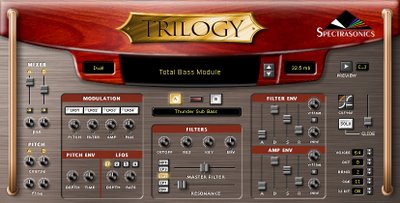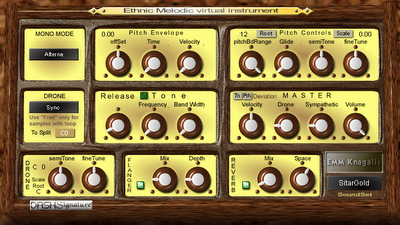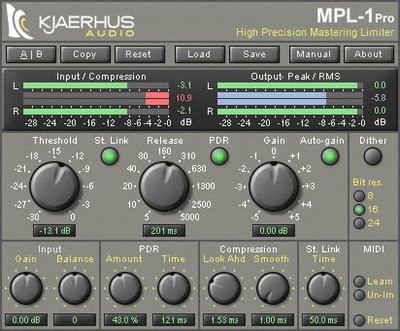At least it shows my brain is starting to function again, though it's not the light and humorous writing some of my readers prefer.
I can't help noticing the amount of retro-chic in music software right now. It's there in commercial stuff, and to a lesser extent in the free stuff. In the design of graphical interfaces, the language of the sales pitch, and the basic assumptions about what sounds good and what will sell.
The talk is all of "analog warmth" and "the transparency and sparkle you only get from vintage equipment". There's some wonderful sounds from the past, but since when was a better sound by definition an older one?

I've found VSTs to recreate every inadequacy and quirk I can think of in tape machines, tube amplifiers and vinyl. Not just nice effects like saturation, mild overdrive and softknee compression, but ones that used to make you scream in frustration when your old and clunky (sorry, "vintage") equipment used to produce them. There's wow and flutter, flat batteries, various kinds of surface noise and hum. The only things I haven't seen yet are amplitude needles that stick and valves that explode.
The GUIs are all brushed metal with highlights, slightly smudged LEDs, tactile-looking knobs and sliders that cast fake shadows, even screws and carrying handles.

Even those few that don't look like a piece of inordinately heavy but delicate engineering, look like something out of Firefox or Terminator. They opt for the kind of 80s retro-techno-chic that harked back to the green screens of the 70s. Yes that's right, 2006 recreating 1986 recreating 1976.
It might be nice to see an virtual room-sized ENIAC or Colossus, with half ping-pong balls over flashing lightbulbs. Unless the 1940s is too far back.

Now don't get me wrong, I think the GUIs look great, I love the sounds, and I'm especially excited about the burgeoning ability to create an authentic sounding string quartet, or roomful of tablas, or the strange instruments of Artaud or Russolo.
One of the factors that made the Moog sound distinctive was the randomly varying slope of it's basic waveforms - an imperfection of the technology that turned out to be serendipitously musical. Although one of the other moog idiosyncrasies was it's tendency to go out of tune, especially in hot weather, and I haven't seen any attempts to recreate that in software.

I like the distorted tape echo of dub reggae, and the softclipping in 70s rock guitar. The booming low frequencies of Motown and the absurdly crunchy amps of Black Sabbath are "wrong" but creatively wrong.
No, the thing that worries me is the attitude that things were better in the past. That the way out of the dead end most western music finds itself in, is to jettison the last 30 years.

Use the past, learn from it, be inspired by it, rediscover it's aborted experiments and try them again, yes. Go back there to stay, no.
Paul Morley once wrote (I quote from memory), "The past is an immense heap of materials to use as we will". Just so - the quirks of old technology give us some options to use from our sonic palette, but there are many times more other possible quirks, from other technologies that by chance never existed.

Digital computers can create and process sound in an effectively infinite number of ways. Currently only a small number are being explored, and the exploration looks backwards.

No comments:
Post a Comment